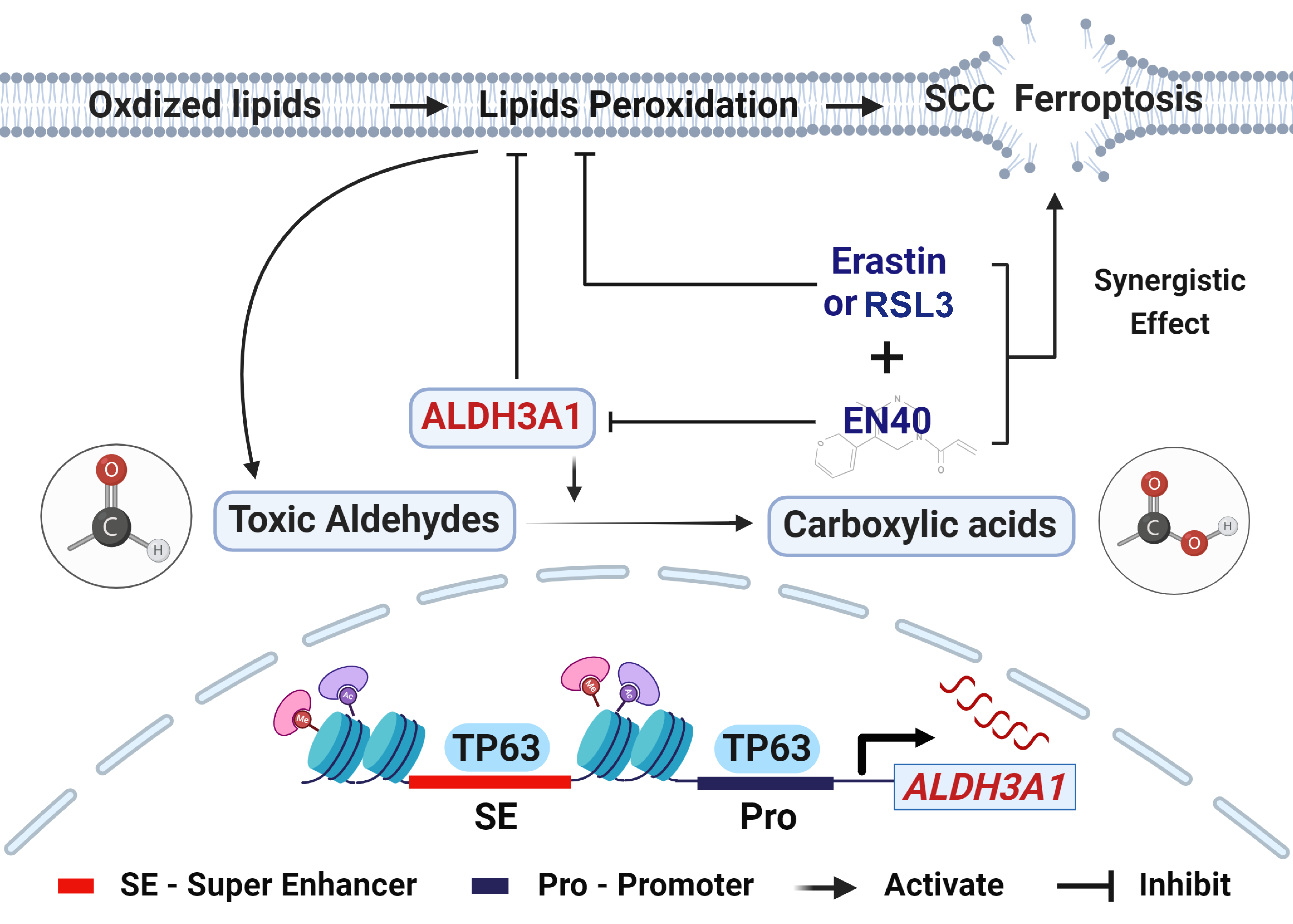
A research team led by Prof. JIANG Yanyi from the Hefei Institutes of Physical Science of the Chinese Academy of Sciences, has uncovered an important mechanism that helps squamous cell carcinoma (SCC) resist a form of cell death - ferroptosis.
Their findings were published in the journal Oncogene.
Ferroptosis is a unique type of cell death that is triggered by the accumulation of iron and the oxidation of lipids in the cell membrane. This process is often seen as a natural defense to eliminate damaged or unhealthy cells. However, many cancer cells manage to escape ferroptosis, which allows them to survive and spread.
The team found that the protein ALDH3A1, known for its role in detoxifying harmful substances in the body, is overactive in SCC cells. This protein works like an "antioxidant shield," neutralizing toxic compounds that would normally cause lipid damage and lead to ferroptosis. By doing so, ALDH3A1 helps protect the cancer cells from dying.
To explore this protective mechanism, the researchers analyzed patient samples, cancer cell lines, and conducted a range of tests. They found that high levels of ALDH3A1 were closely linked to pathways that help SCC cells resist ferroptosis. When they reduced ALDH3A1 in SCC cells, the cells became more sensitive to ferroptosis, confirming its protective role.
Further experiments revealed that TP63, an oncogene, acts as a "master switch" for ALDH3A1. It directly activates the ALDH3A1 gene, triggering the protective mechanism. When the team turned off TP63, the cancer cells lost their ability to resist ferroptosis, but they regained protection when ALDH3A1 was reactivated.
Interestingly, the researchers found that combining EN40, an ALDH3A1 inhibitor, with RSL3, a drug that induces ferroptosis, had a powerful effect in animal models and 3D organoid systems. This combination treatment effectively broke down the cancer cells' defenses and made them more vulnerable to ferroptosis.
"The ALDH3A1 can serve as a potential biomarker to identify patients who could benefit from ferroptosis-based therapies," said Dr. KONG Shuai, a member of the team, "also the dual approach of targeting ALDH3A1 and inducing ferroptosis could lead to new, more effective treatments for squamous cell carcinoma."

A model illustrating the function of ALDH3A1 regulating ferroptosis in SCCs. ALDH3A1 is overexpressed by TP63 transcriptional regulation in squamous cell carcinoma and plays an anti-ferroptosis role by metabolising toxic aldehydes. (Image by KONG Shuai)